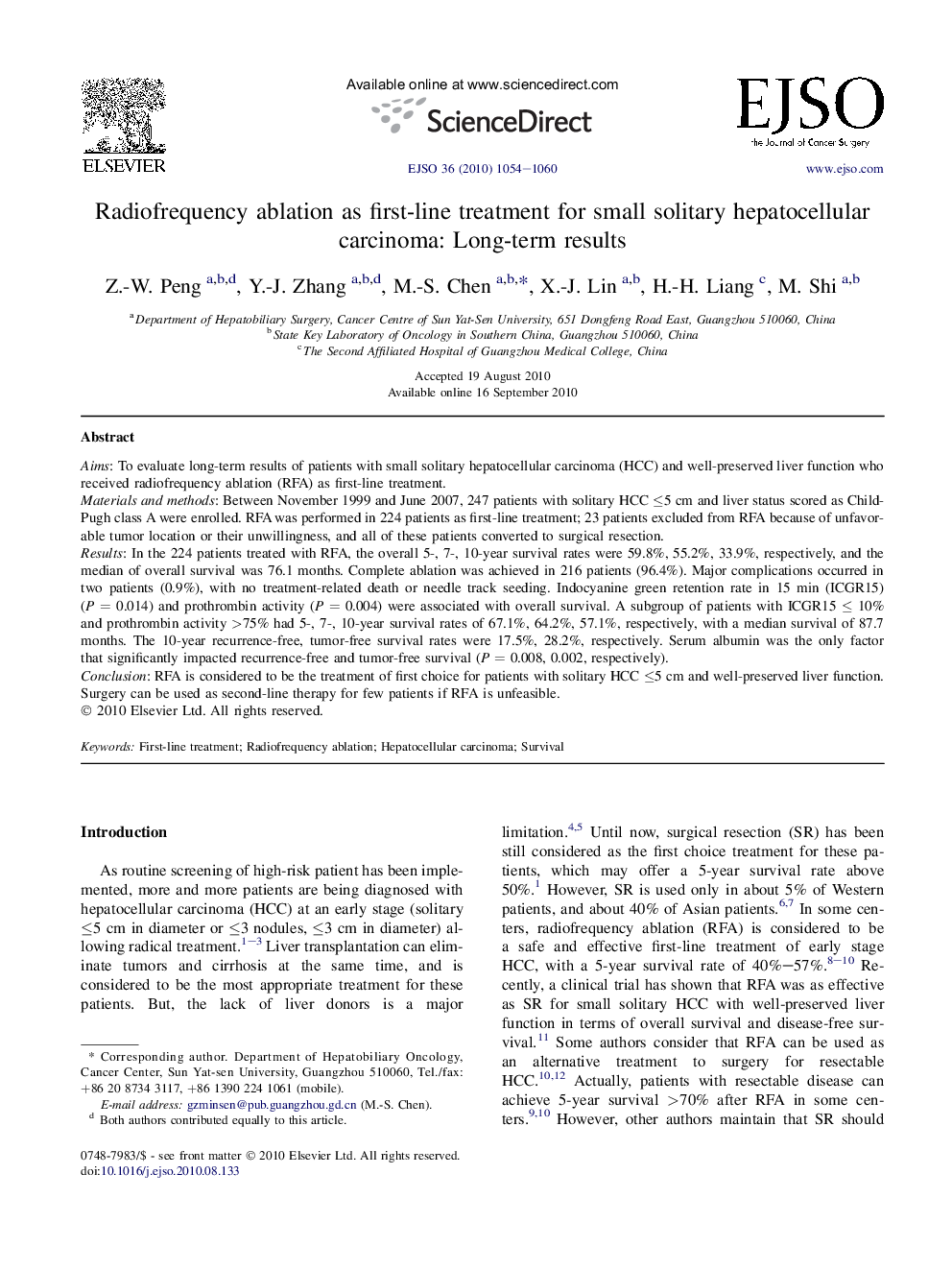| Article ID | Journal | Published Year | Pages | File Type |
|---|---|---|---|---|
| 3987304 | European Journal of Surgical Oncology (EJSO) | 2010 | 7 Pages |
AimsTo evaluate long-term results of patients with small solitary hepatocellular carcinoma (HCC) and well-preserved liver function who received radiofrequency ablation (RFA) as first-line treatment.Materials and methodsBetween November 1999 and June 2007, 247 patients with solitary HCC ≤5 cm and liver status scored as Child-Pugh class A were enrolled. RFA was performed in 224 patients as first-line treatment; 23 patients excluded from RFA because of unfavorable tumor location or their unwillingness, and all of these patients converted to surgical resection.ResultsIn the 224 patients treated with RFA, the overall 5-, 7-, 10-year survival rates were 59.8%, 55.2%, 33.9%, respectively, and the median of overall survival was 76.1 months. Complete ablation was achieved in 216 patients (96.4%). Major complications occurred in two patients (0.9%), with no treatment-related death or needle track seeding. Indocyanine green retention rate in 15 min (ICGR15) (P = 0.014) and prothrombin activity (P = 0.004) were associated with overall survival. A subgroup of patients with ICGR15 ≤ 10% and prothrombin activity >75% had 5-, 7-, 10-year survival rates of 67.1%, 64.2%, 57.1%, respectively, with a median survival of 87.7 months. The 10-year recurrence-free, tumor-free survival rates were 17.5%, 28.2%, respectively. Serum albumin was the only factor that significantly impacted recurrence-free and tumor-free survival (P = 0.008, 0.002, respectively).ConclusionRFA is considered to be the treatment of first choice for patients with solitary HCC ≤5 cm and well-preserved liver function. Surgery can be used as second-line therapy for few patients if RFA is unfeasible.
